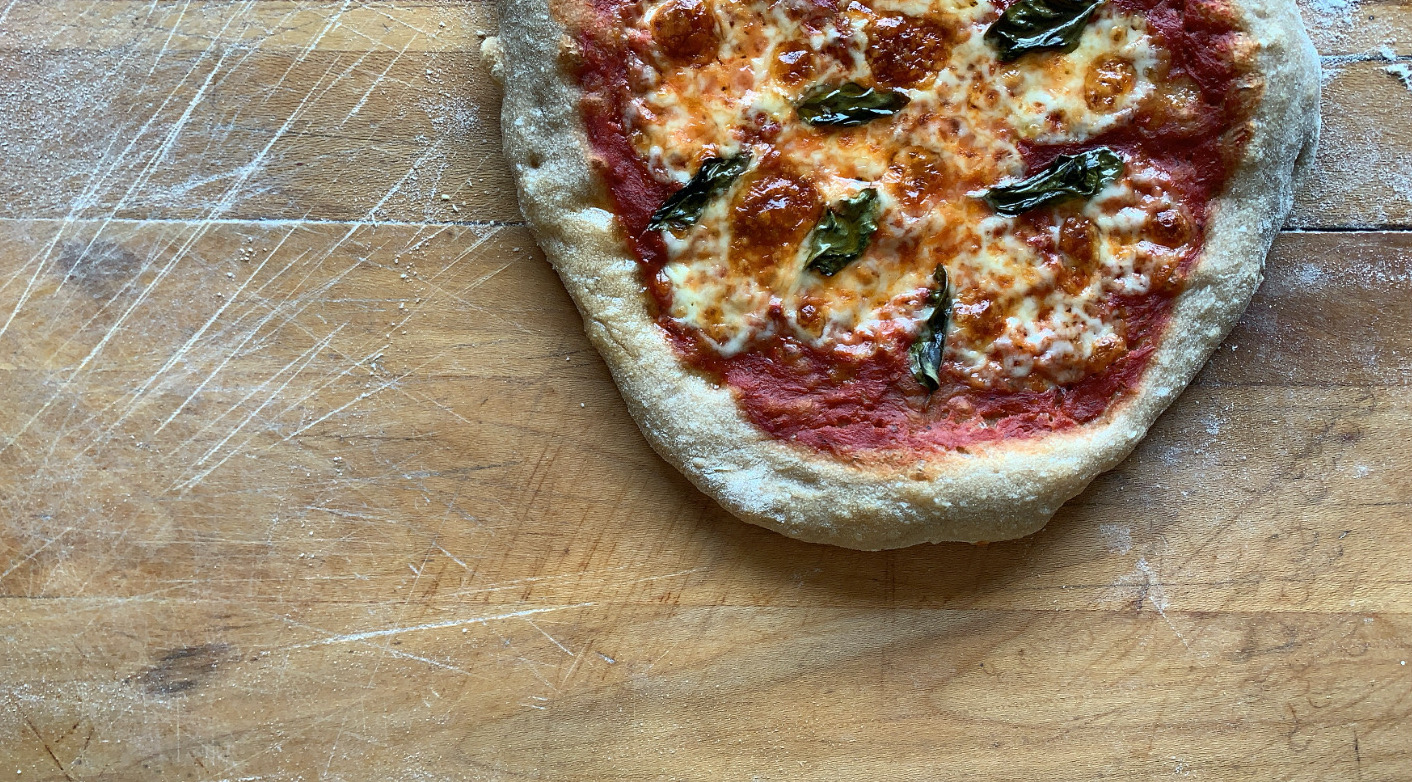Brodflour may consist entirely of bread people but, quite frankly, none of us have met a carb we didn’t like. We can’t call ourselves pasta experts but we wanted to develop a simple homemade pasta recipe to help all your pasta-making dreams come true. It’s a versatile dough made with eggs, Red Fife flour, a little bit of water and a lot of kneading.
A good rule of thumb when making pasta with our fresh milled flour is use 110 g of flour to 1 egg. If you plan on using a different flour, you may have to play around with this ratio.
Serves 3
330 g Red Fife flour
3 large eggs
1 – 3 tsp water
Measure flour and pour onto a clean work surface. Create a well or indent in the middle of the flour pile – this should be wider than you think as it needs to accommodate the eggs. Crack the eggs into the well and begin incorporating the eggs and flour with a fork, pulling the four in little-by-little. It’s important to work slowly during this stage to keep the eggs contained.
Once the dough begins to form you can start kneading, using a dough scraper to collect the dry flour and add it to the top of the dough. This is the labour intensive part – you’ll need to knead the dough for about 5 to 10 minutes to get it to the right consistency with the right amount of gluten. You can add water 1 teaspoon at a time if the dough feels too dry and isn’t coming together. If you do feel the dough needs more moisture, try to add as little water as possible – pasta dough should be on the dryer side.
Once the dough looks smooth and elastic, it’s ready to rest. Cover your dough with a bowl or wrap in plastic wrap and let sit for 30 minutes to an hour. Cut the dough into six pieces, wrapping five and keeping one out. Flatten the dough with the palm of your hand.
Set up and flour your pasta machine. With your pasta roller on the widest setting, feed your flattened piece of dough through the machine. Fold your dough in half and feed it through the machine again on the widest setting, dusting dough and roller with flour as needed. Repeat the folding process on the widest setting until the dough is smooth and slides through the machine easily.
Set your machine one setting down and feed your pasta through. Repeat this process working your way down to the smallest setting. Cut your pasta dough to the desired length and switch to the pasta cutter attachment. Feed your final flattened dough through the pasta cutter attachment to get your desired noodles.
Shape noodles into a nest on a floured baking sheet and dust with flour. Repeat the rolling process with all dough pieces. Pasta can be cooked fresh or frozen on the baking sheet and stored frozen in an airtight container for 3 months. Fresh pasta can also be stored in a sealed container in the fridge for one to two days.


